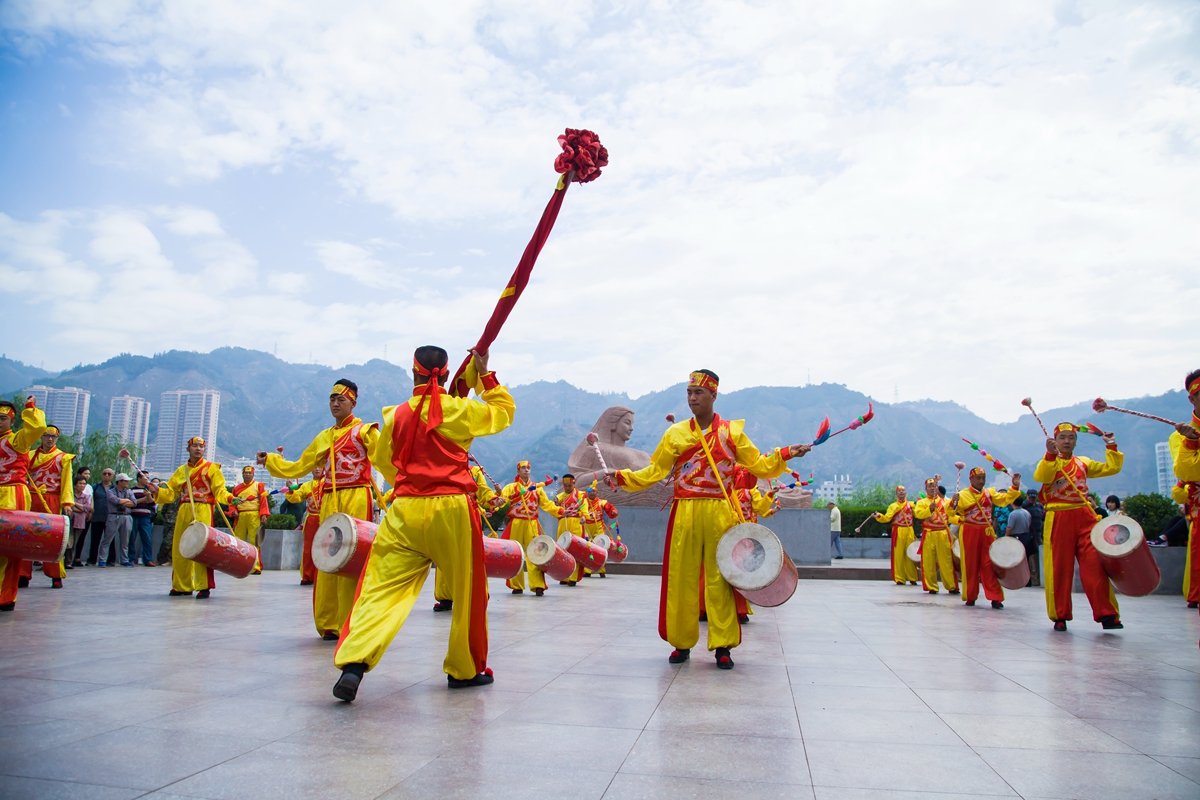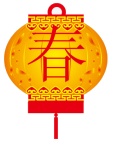
漢德百科全書 | 汉德百科全书
 Traditions
Traditions


九州,又名汉地、中土、神州、十二州 ,最早出现先秦时期典籍《尚书·禹贡》中,是中国汉族先民自古以来的民族地域概念。自战国以来九州即成为古代中国的代称 ,而自汉朝起成为汉族地区的代称,又称为“汉地九州” 。
汉族先民自古就将汉族原居地划分为九个区域,即所谓的“九州”。根据《尚书·禹贡》的记载,九州顺序分别是:冀州、兖州、青州、徐州、扬州、荆州、豫州、梁州、雍州。《尔雅》中有幽州与营州,没有青州和梁州。《周礼》中有幽州与并州,没有徐州和梁州。
先秦的华夏之域仅限于鲁、晋、齐、郑、蔡、卫等“王之支子母弟甥舅”诸国及行周礼的宋、陈等中原诸国,汉代在先秦诸国的基础上萌芽出后世汉族九州的概念。
至迟自汉代起的华夏之区域与《禹贡》所载九州之区域等同 ,九州等同于汉地。又有“东夏”、“南夏” 、“西夏” 等词称呼汉地内的局部地区。






Jun yao (chinesisch 钧窑, Pinyin Jun yao, W.-G. Chün yao, englisch Jun Kiln ‚Jun-Brennofen‘) ist die Fachbezeichnung für in der Stadt Yuzhou der chinesischen Provinz Henan befindliche song-zeitliche Porzellanbrennöfen. Der Jun-Brennofen zählt zu den Fünf berühmte Brennöfen der Song-Dynastie, er wird auch Jun yao 均窑 oder Junzhou yao 钧州窑 genannt.[1] Die Stätte wurde 1951 entdeckt. Das Jun-Porzellan hat einen dunklen Grundton mit einer blauschwarz gesprenkelten Glasur, die meist mit einem feinen Netz von Rissen überzogen ist.
钧窑也称均窑,均州窑是宋代初年,在今河南省禹州市神垕镇钧台建立的瓷窑。钧窑古瓷窑址现在是全国重点文物保护单位,原址处建有“禹州钧官窑址博物馆”[1]。
钧窑是中国宋代五大名窑之一,创烧于唐,兴盛于宋,复烧于金元,延至明清仍继续仿制,历经千年而不衰,形成了一个庞大的钧窑系,与汝、官、哥、定诸窑齐名。迄今为止,在禹州境内已发现北宋钧窑遗址多达四十处,尤以神垕镇大刘山下最为集中。
禹州现存最早的《钧州志》中说:“瓷窑在州西大刘山下”。在禹州市神垕镇下白峪村和苌庄乡等地,先后出土黑、褐釉高温窑变花瓷,被陶瓷学家称为“唐钧”,它是宋代钧瓷的先声。宋“靖康之变”(1126年)后,宋室南迁,官钧窑停烧,钧瓷一时受挫。到金、元时代,钧瓷有了新的发展,各地争相仿制,风靡一时,钧窑播火全国。元末明初,因战乱和灾荒,钧窑生产渐衰。明、清时期,制瓷中心南移,北方诸名窑衰退,钧窑也基本停烧。清朝晚期,钧瓷复苏。到光绪三十年(1904年),神垕镇烧制钧瓷者已有十余家。民国年间,因战乱、灾荒频繁,钧瓷生产举步维艰。至民国三十一年(1942年)后,因大旱和政局混乱,艺人外流,钧瓷生产趋于停产状态。1949年以后,特别是中国改革开放以来得到了快速发展,被做为国礼,达到了一个新的高度。
钧窑土脉细,釉彩有兔丝纹:红的像胭脂、朱沙,青翠的像葱,紫色如紫玫瑰等多种颜色,俗称海棠红、梅子青、茄皮紫、天兰等色彩。钧窑瓷器常发生窑变,除本色釉外还会变出其他颜色,而钧瓷的名贵正在于其独特的窑变釉色,其釉色是烧制过程中自然形成,非人工描绘,每一件钧瓷的釉色都是唯一的,故有“钧瓷无双”的说法,钧瓷的釉质深厚透活,晶莹玉润,有明快的流动感。
明代文震亨在《长物志》一书中对钧窑的评论:“均州窑色如胭脂者为上,青若葱翠、紫若黑色者次之,杂色者不贵。”[2] 景德镇窑在清代也烧制仿钧窑瓷器。[3]
Jun ware (Chinese: 鈞窯; pinyin: Jūn yáo; Wade–Giles: Chün-yao) is a type of Chinese pottery, one of the Five Great Kilns of Song dynasty ceramics. Despite its fame, much about Jun ware remains unclear, and the subject of arguments among experts. Several different types of pottery are covered by the term, produced over several centuries and in several places, during the Northern Song dynasty (960–1126), Jin dynasty (1115–1234) and Yuan dynasty (1271–1368), and (as has become clearer in recent years) lasting into the early Ming dynasty.[1]
Some of the wares were popular, especially the drinking vessels, but others seem to have been made for the imperial court and are known as "official Jun wares"; they are not mentioned in contemporary documents and their dating remains somewhat controversial. These are mostly bowls for growing bulbs or flower-pots with matching stands, such as can be seen in many paintings of scenes in imperial palaces.[2] The consensus that seems to be emerging, driven largely by the interpretation of excavations at kiln sites, divides Jun wares into two groups: a large group of relatively popular wares made in simple shapes from the Northern Song to (at lower quality) the Yuan, and a much rarer group of official Jun wares made at a single site (Juntai) for the imperial palaces in the Yuan and early Ming periods.[3] Both types rely largely for their effect on their use of the blue and purple glaze colours; the latter group are sturdy shapes for relatively low-status uses such as flowerpots and perhaps spitoons.[4]
The most striking and distinctive Jun wares use blue to purple glaze colours, sometimes suffused with white, made with straw ash in the glaze.[5] They often show "splashes" of purple on blue, sometimes appearing as though random, though they are usually planned. A different group are "streaked" purple on blue,[6] the Chinese describing the streaks as "worm-tracks". This is a high-prestige stoneware which was greatly admired and often imitated in later periods. But colours range from a light greenish-brown through green to blue and purple. The shapes are mostly simple, except for the official wares, and other decoration is normally limited to the glaze effects.[7] Most often, the "unofficial" wares are wheel-thrown, but the official ones moulded.
The wares are stoneware in terms of Western classification, and "high-fired" or porcelain in Chinese terms (where the class of stoneware is not generally recognised). Like the still more prestigious Ru ware, they are often not quite fired as high as the normal stoneware temperature range, and the body remains permeable to water.[8] They form a "close relative" of the wider group of Northern celadons or greenwares.[9]




Eine Kong-Ming-Laterne (chin. kǒngmíng dēng großes/offenes helles Lampion oder tiān dēng Himmels-Lampion), auch Himmelslaterne, Sky-Laterne, Glückslaterne oder Wunschlaterne, ist ein Lampion in Leichtbauweise, der in die Luft aufsteigen kann und bei dem der Auftrieb durch Erwärmung der im Ballonkörper enthaltenen Luft mittels einer eigenen Feuerquelle erzeugt wird.(Quelle:Wikipedia)




Kun-Oper hat ihren Ursprung in der Stadt Kunshan in der Jiangsu- Provinz und blickt auf eine Geschichte von mehr als 600 Jahren zurück. Die Vorgänger der Kunqu-Oper wurden als "Kunshan-Melodie" oder abgekürzt "Kun-Melodie" bezeichnet. Zu Beginn war Kunqu als lokale Volksmelodie ausschließlich in Kunshan und deren Umgebung populär. Später fand sie allmählich auch landesweit Verbreitung.
Die Kunqu-Oper gliedert sich in drei Teile, wovon jeder einzelne einen eigenen kulturellen Wert besitzt: das Bühnenstück an sich, die Begleitmusik und die Darstellung. Eine Kunqu-Oper besteht normalerweise aus 24 Szenen. Jede Szene hat eine relativ komplexe Handlung. Die Inhalte der Liedtexte der Kunqu-Oper sind sorgfältig ausgewählt und von einer feinen Sprache gekennzeichnet. Die Gesangsart ist weich und rhythmisch.(Quelle: www.chinapur.de/html/body_kunqu-sichuan.html)
Kunqu (chinesisch 崑曲 / 昆曲, Pinyin Kūnqǔ, W.-G. k'un-ch'ü; auch Kunju oder Kun-Oper) ist eine der ältesten Bühnenkunstformen der Welt und stammt aus China. Kunqu gehört zur Gattung der chinesischen Oper. Viele große Werke der chinesischen Literatur wurden ursprünglich für Kunqu verfasst, darunter Der Päonien-Pavillon (Mudan Ting) aus der Ming-Dynastie und Der Fächer mit den Pfirsichblüten von Kong Shangren.
Kunqu entwickelte sich im 14. Jahrhundert aus der Kunshan-Melodie und wurde im 17. Jahrhundert durchgreifend reformiert, um mit der Tonalität des Wu-Dialektes übereinzustimmen. Sie hatte großen Einfluss auf verschiedene andere chinesische Theaterformen, darunter die Pekingoper, wurde aber während der Zeit der Qing-Dynastie geschwächt und verschwand um 1930 beinahe ganz. In den folgenden Jahren wurde sie jedoch von einigen Intellektuellen und Pekingoper-Darstellern wiederbelebt.
Nach der Chinesischen Revolution wurde die Kunqu staatlich unterstützt, musste aber neue, politische Stücke einführen. Mit ihrem Eintrag in die UNESCO-Liste der Meisterwerke des mündlichen und immateriellen Erbes der Menschheit als Meisterwerk traditioneller Weltkultur im Mai 2001 hat sich die Lage der Kunqu erheblich verbessert. Heute ist sie vor allem noch in den Städten Suzhou, Shanghai und Nanjing zu sehen.
昆曲是中国戏曲的剧种之一,发源于元末明初的苏州府昆山县(今江苏省苏州市昆山市巴城镇)[1],起初流行于江南一带,而后风靡全国;盛清时,上至宫廷贵族、下至贩夫走卒皆热爱昆曲。有俗谚云:“家家‘收拾起’,[2]户户‘不提防’”,[3]即反映当时昆曲广为普及且深入人心的程度。
昆曲以曲唱为中心,唱念使用之语音为“中州韵”,主要以曲笛、鼓、板等乐器伴奏,风格缠绵婉转细腻,故又有“水磨腔”之雅称。其舞台演出形式亦称“昆剧”,因表演手段丰富、身段具备高度舞蹈性,与唱腔、曲词扣合得严丝合缝,形成精致的艺术规范,影响所有后出之地方剧种,故素有“百戏之母”之美誉。
崑曲(こんきょく、ピンイン:Kūnqǔ)とは中国の古典的な舞台演劇である戯曲の一形式、あるいは戯曲に使われる声腔(楽曲の曲調や演奏法、歌い方などの体系)の1つである。前者の意味で崑劇(こんげき)、後者の意味で崑腔(こんこう)とも言われる。現代ではもっぱら前者を指すことが多い。後者は明・清代の戯文や伝奇で用いられた。無形文化遺産保護条約の発効以前の2001年に、ユネスコによって「人類の口承及び無形遺産の傑作」の宣言を受けており、無形文化遺産に登録されることが事実上確定していたが、2009年9月の初の登録で正式に登録された。
Kunqu (Chinese: 崑曲), also known as Kunju (崑劇), K'un-ch'ü, Kun opera or Kunqu Opera, is one of the oldest extant forms of Chinese opera. It evolved from the local melody of Kunshan, and subsequently came to dominate Chinese theater from the 16th to the 18th centuries. The style originated in the Wu cultural area. It has been listed as one of the Masterpieces of the Oral and Intangible Heritage of Humanity by UNESCO since 2001.[1]
Le kunqu (崑曲, pinyin : Kūnqǔ, Wade-Giles : k'un-ch'ü, EFEO k'ouen k'iu), ou opéra de Kunshan, parfois également appelé kunju (崑劇, pinyin : kūnjù) ou kunshanqiang, est la plus vieille forme d'opéra chinois qui soit encore jouée. Le kunqu a été proclamé en 2001 puis inscrit en 2008 par l'UNESCO sur la liste représentative du patrimoine culturel immatériel de l'humanité.
Il Kūnqǔ (崑曲T, 昆曲S), o opera Kunqu, è una delle più antiche forme di opera cinese. Evoluzione del genere musicale Kunshan, dominò il teatro cinese dal XVI al XVIII secolo.
Kunqu (崑曲; pinyin: Kūnqǔ; Wade-Giles: k'un-ch'ü), también conocido como Kunju, ópera Kun u ópera Kunqu, es una de las más antiguas formas existentes de la ópera china. Evolucionó desde la música Kunshan, y dominó el teatro de China desde el siglo XVI hasta el XVII. El kunqu es originario del área cultural de Wu, y existen grupos profesionales establecidos en Nankín, Shanghái y Suzhou.
La ópera Kunqu fue considerada Obra Maestra del Patrimonio Oral e Intangible en 2001 por la Unesco, siendo definitivamente inscrita en 2008 en la Lista representativa del Patrimonio Cultural Inmaterial de la Humanidad.1
Куньцюй (кит. упр. 崑曲, пиньинь Kūnqǔ), Куньшаньская опера — старейшая из дошедших до наших дней разновидностей китайской оперы (классической музыкальной драмы).
Возникла в уезде Куньшань провинции Цзянсу в конце династии Юань (1271—1368) — начале Мин (1368—1644). Отличается мягким и ясным вокалом, мелодии красивы и утонченны. Жанр достиг вершины популярности в конце Мин — начале Цин (1644—1911) и оказал большое влияние на другие виды оперы. В начале XX века жанр был под угрозой исчезновения.
Профессиональные труппы работают в городах Пекин, Шанхай, Хучжоу, Нанкин, Чанша, Вэньчжоу, Сучжоу, Ханчжоу и Тайбэй.




 Review
Review
 Traditional medicine
Traditional medicine

 Botany
Botany
 History
History
 Art
Art
 Spring Festival
Spring Festival
 Holidays
Holidays
 Vacation and Travel
Vacation and Travel
 National Opera
National Opera
 Performing Arts
Performing Arts